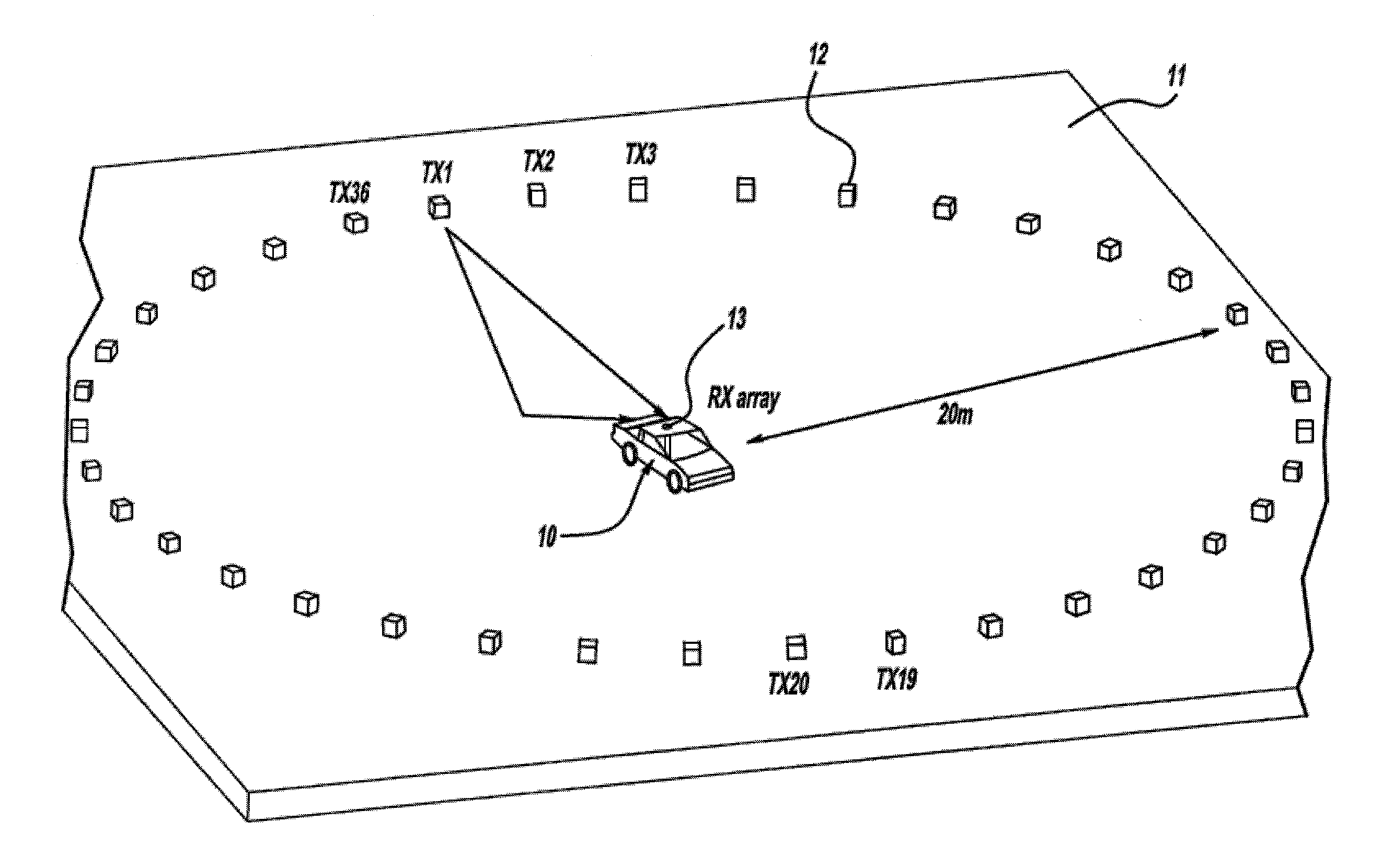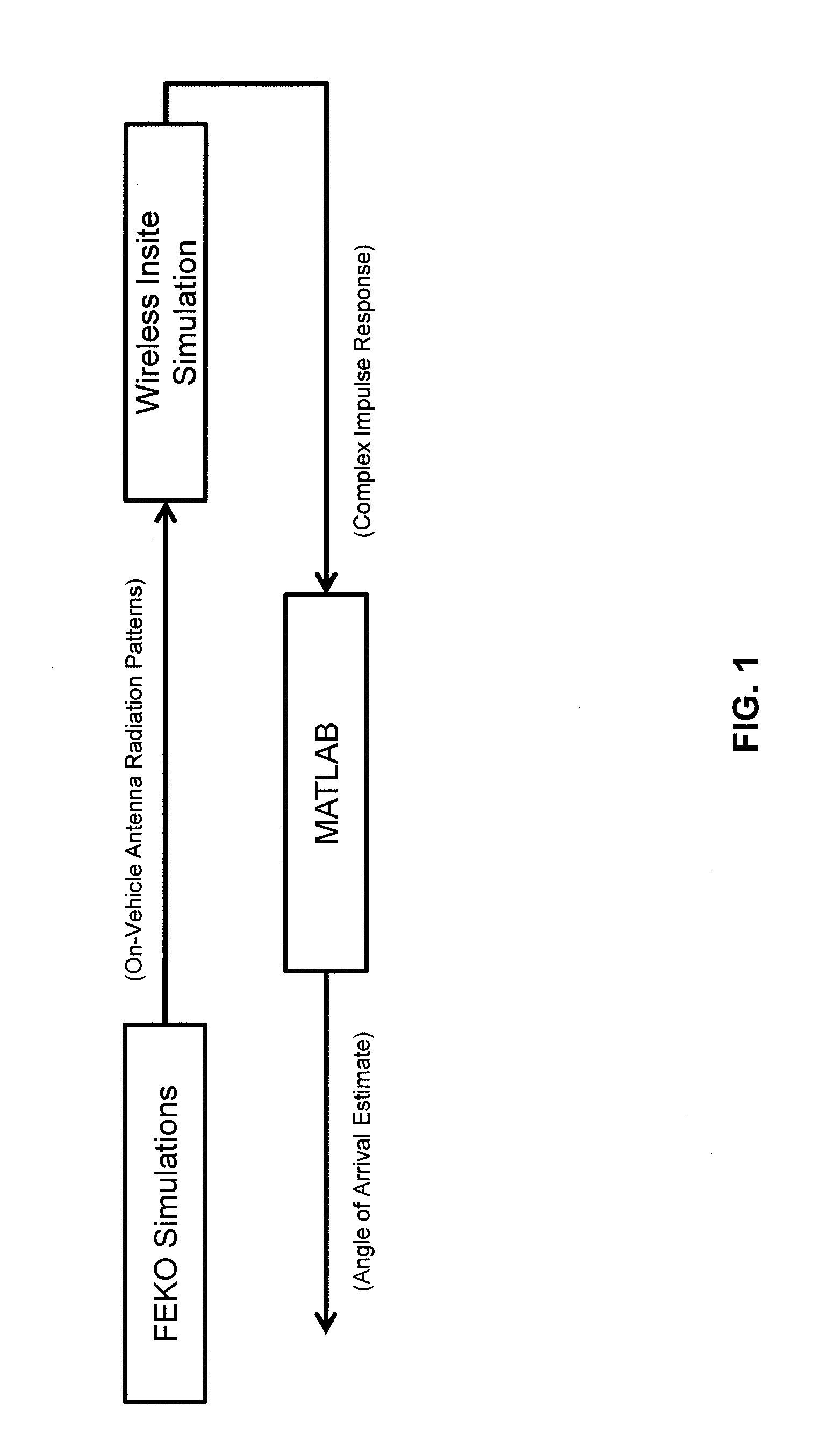Automotive direction finding system based on received power levels
a technology of power level and direction finding system, applied in direction finders, traffic control systems, instruments, etc., can solve problems such as system failure in more complex reflecting environments such as parking lots and parking garages
- Summary
- Abstract
- Description
- Claims
- Application Information
AI Technical Summary
Benefits of technology
Problems solved by technology
Method used
Image
Examples
Embodiment Construction
[0033]All patents, patent applications, government publications, government regulations, and literature references cited in this specification are hereby incorporated herein by reference in their entirety. In case of conflict, the present description, including definitions, will control.
DEFINITIONS
[0034]PD-DF—Pseudo-doppler direction finding[0035]PD—Pseudo-doppler[0036]DF—Direction finding[0037]RPL—Received power level method[0038]PLL—Phase locked loop[0039]COTS—Cost of the shelf[0040]DOA—Direction of arrival[0041]SBR—Shooting and bouncing rays[0042]SC-PD—Single channel pseudo-doppler[0043]AOA—Angle of arrival[0044]RF—Radio frequency[0045]IF—Intermediate frequency[0046]Hz, KHz, MHz, and GHz—Hertz, Kilohertz, Megahertz, and Gigahertz[0047]BPSK—binary phase shift keying[0048]LED—Light emitting diodes[0049]LOS—Line of sight[0050]A-SCPD—Analogue single channel pseudo-doppler[0051]D-PLL—Digital phase lock loop[0052]DFT—Discrete Fourier transform[0053]HPBW—Half-power beam widths[0054]ADC—...
PUM
 Login to View More
Login to View More Abstract
Description
Claims
Application Information
 Login to View More
Login to View More - R&D
- Intellectual Property
- Life Sciences
- Materials
- Tech Scout
- Unparalleled Data Quality
- Higher Quality Content
- 60% Fewer Hallucinations
Browse by: Latest US Patents, China's latest patents, Technical Efficacy Thesaurus, Application Domain, Technology Topic, Popular Technical Reports.
© 2025 PatSnap. All rights reserved.Legal|Privacy policy|Modern Slavery Act Transparency Statement|Sitemap|About US| Contact US: help@patsnap.com



